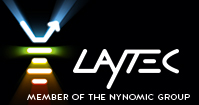Reflectance Anisotropy Spectroscopy
Reflectance Anisotropy Spectroscopy (RAS), also known as Reflectance Difference Spectroscopy (RDS), measures the anisotropic optical response of surface reconstructions, interface bonds and doping induced internal electric fields by using the difference in the reflectance for the light polarised along two axes (x and y) of the crystal under investigation.
Compared to conventional reflectance measurements, RAS monitors the properties of surfaces, interfaces and doping-induced surface electric fields, which makes it a unique optical in-situ technique. Moreover, because RAS includes the conventional reflectance measurement in addition to its surface and doping level sensitivity, the method allows for determination of layer thickness, growth rate and composition through reflectance analysis. Yet please note that RAS can only be applied to cubic crystals, as they are grown e.g. on GaAs and InP.
Physical background
For bulk material of cubic crystals, the reflectance should be the same along two axes perpendicular to each other. However, at the surface region symmetry is reduced due to the crystal termination. This region of the crystal is responsible for the occurrence of the RAS signal. It carries information about symmetry and stoichiometry of the uppermost atomic layers. As tiny changes in surface stoichiometry can have a considerable impact on the surface symmetry, RAS enables growth monitoring and growth control on a sub-monolayer level.
EpiRAS - in-situ monitor for cubic semiconductors

The RAS method is applied in LayTec's unique in-situ metrology system EpiRAS. During the epitaxial growth, EpiRAS provides information about layer thickness, growth rate, bulk composition, surface stoichiometry and doping level. Learn more on the EpiRAS product page

